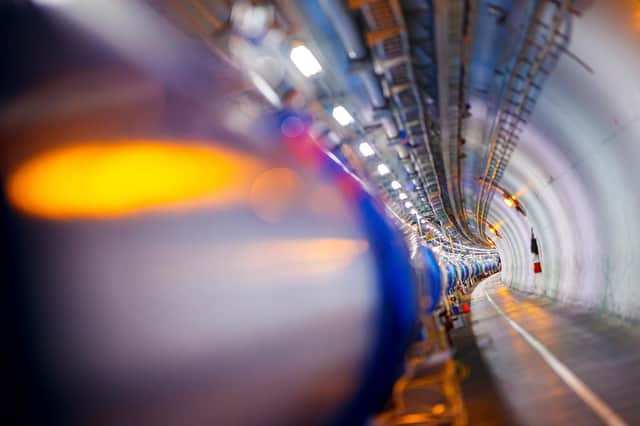Large Hadron Collider: Higgs boson is far from the end of the exciting discoveries about the fundamental nature of the universe – Professor Sinéad Farrington


A magnet had malfunctioned within the collider – the world’s largest and most powerful particle accelerator consisting of a 27-kilometre ring of superconducting magnets – releasing tons of liquid helium, forcing several multi-ton magnets from their mountings.
Temporarily, the LHC’s world-leading research was on hold. However, by 2010, it was operational again and has since yielded world-record-breaking results and discoveries.
Advertisement
Hide AdAdvertisement
Hide AdThis summer, the Atlas experiment at the LHC, where I collaborate, recorded collisions of protons at another record-breaking energy of 13.6 TeV (the amount gained by an electron accelerated through a trillion volts), which is testimony to many feats of engineering, including many which have found applications in medical accelerators and imaging.
During a collision, the fundamental ‘quark’ and ‘gluon’ components of protons can interact to produce myriad types of particles. The LHC experiments were designed to detect the products of the collisions – measuring already-known particles to much higher accuracy – and, crucially, to detect new and unexpected particle signatures. Colliding protons at higher energies than ever before means heavier new particles can be produced.
Recently, the Atlas experiment, alongside its sister experiment, CMS, achieved another unprecedented milestone, with each publishing 1,000 research papers.
The most impactful research paper so far – now cited by scientists 12,000 times – was published in 2012 and detailed the discovery of the ‘Higgs boson’.
Theorised by University of Edinburgh Emeritus Professor Peter Higgs, the Higgs boson is a fundamental particle which interacts with anything with mass. The Nobel prize-winning observation was the first successful identification of the particle that gives mass to all known particles. It is the strength of a particle’s interaction with the Higgs boson defines its mass.
Since the Higgs boson itself has mass, it can couple to itself, a phenomenon which offers a whole new realm of discovery.
Through major upgrades to the LHC set to be operational in 2029, an unprecedented new precision will be unleashed. The resulting dataset will allow us to home in on the strength of the Higgs’ self-interaction, a parameter connected to the fate of the universe, yielding findings with significant implications.
The LHC has the ability to connect the smallest components of our universe to questions on universal scales, addressing issues such as the nature of the dark matter, which astronomical observations implies is in our universe, and the apparent dominance of matter over antimatter. More detailed measurements of the Higgs boson could shine light on these questions and even on the universe’s stability.
Advertisement
Hide AdAdvertisement
Hide AdThe next 1,000 research papers at the Large Hadron Collider will continue to shape our understanding of the fundamental world alongside the thrilling work of people from all over the globe to map out new regions of the subatomic world. Be prepared for the unexpected.
Sinéad Farrington is professor at the Institute for Particle and Nuclear Physics at the University of Edinburgh, and a fellow of the Royal Society of Edinburgh. This article expresses her own views. The RSE is Scotland's national academy, bringing great minds together to contribute to the social, cultural and economic well-being of Scotland. Find out more at rse.org.uk and @RoyalSocEd.
Comments
Want to join the conversation? Please or to comment on this article.
